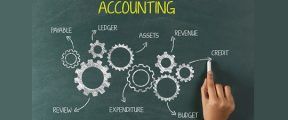 Autonomous Items are the reason for the imbalances in the Balance of Payment Account. On the other hand, Accommodating Items are intended to restore the balance in the Balance of Payment Account.
Autonomous Items are the reason for the imbalances in the Balance of Payment Account. On the other hand, Accommodating Items are intended to restore the balance in the Balance of Payment Account.
While autonomous items are foreign exchange transactions which arise due to profit motives. Accommodating items are nothing but short-term capital transactions which emerge to overcome the disequilibrium in the Balance of Payment causing due to autonomous items.
Do you know that the balance of a payment account always balances as its preparation is based on the double entry system of bookkeeping? This results in a significant issue concerning how surplus or deficit takes place in a balance sheet.
Disequilibrium in BOP Account
Disequilibrium in the BOP account implies that there is a surplus or deficit in the BOP. Deficits occur when the outflow of foreign exchange is greater in comparison to the inflow. Although, a surplus takes place when the outflow is less than the inflow. Factors that contribute to the disequilibrium in the BOP account include:
- Inflation
- Exchange rate fluctuations
- Growth in population
- Trade cycle fluctuations
- Reduction in demand
In this post, we are going to discuss the differences between autonomous and accommodating items
Content: Autonomous Items Vs Accommodating Items
- Comparison Chart
- What are Autonomous Items?
- What are Accommodating Items?
- Key Differences
- Conclusion
Comparison Chart
| Basis for Comparison | Autonomous Items | Accommodating Items |
|---|---|---|
| Meaning | Autonomous Items imply such economic transactions taking place on an international level, that occurs due to profit motive. | Accommodating Items implies those economic transactions carried out with the purpose of meeting the gap in autonomous transactions. |
| Also known as | Above-the-line items | Below-the-line-items |
| Effect | These transactions are independent of the status of the Balance of Payment Account. | These transactions are carried out for maintaining the balance in the Balance of Payment Account. |
| In which account do these transactions fall? | These transactions fall on both the current account and the capital account. | These transactions fall in the capital account only. |
| Involves | It involves the movement of goods and services across borders. | It does not involve the movement of goods and services across borders. |
| Balancing | Financing the deficit is possible by decreasing foreign currency reserves or borrowing from International Monetary Fund. This is shown as a depletion in reserves. | Accommodating Items are helpful in overcoming the surplus or deficit in the Balance of Payment Account. |
| Carried out by | Both private and government sectors. | Government sector only. |
What are Autonomous Items?
Balance of Payment items which are not dependent upon other BOP transactions is Autonomous Items. So, these transactions take place automatically and so they occur for the satisfaction they provide. A deficit in the balance of payment the inflow from autonomous transactions is less in comparison to the outflow. As against, a surplus in the BOP account results when the inflow from autonomous transactions is more than the outflow
Autonomous transactions are non-compensating transactions which take place for their own sake, i.e. for making a profit. Also, they are not determined by the situation of other items in the BOP. They occur on both current and capital accounts.
In the case of the current account, the autonomous transactions cover exports and imports. Also, it covers unilateral transfers, though they are not commercial items, as they don’t result in a balance in the balance of payment.
In the case of capital account, autonomous transactions include long-term capital movements, as they are commercial transactions that aim to earn profit.
Also Read: Difference Between Capital Account and Current Account
Example
- Export of rubber to the USA
- A loan raised by a company from a foreign bank
What are Accommodating Items?
Accommodating Items as the name suggests are compensating capital transactions that tend to cover the disequilibrium in the autonomous items of BOP. They are undertaken to cover the deficit or surplus in autonomous transactions. They aim to provide financing to the imbalances in other items of the BOP. In short, these transactions are the ultimate result of the status of the balance of payment. Moreover, they are based on autonomous transactions. They fill the gap so as to equalize the balance of payment.
It uses government financing, and official settlements, for keeping the Balance of Payment in balance.
Here one should take note that a surplus or deficit shows excess demand for foreign exchange is it positive or negative. Such an excess demand is fulfilled by accommodating transactions. It includes:
- Short-term capital movement
- Monetary gold movement
- Variations in foreign exchange reserves
Also Read: Difference Between Balance of Trade and Balance of Payment
Example
Let’s say the autonomous inflow from the foreign transactions is Rs. 65 crores and the outflow is Rs. 70 crores. It indicates a deficit of Rs. 5 crores. To cover the gap, one alternative is to borrow money from abroad. So, this kind of borrowing will be regarded as an accommodating one because it is taken for covering the deficit arising out of autonomous transactions.
Borrowing in case of autonomous transactions is undertaken to earn interest.
Hence, any form of external assistance from abroad and borrowings from the IMF fall under the category of accommodating transactions.
As a second alternative, the country can withdraw foreign exchange reserves to meet the deficit amount. This will also be an accommodating transaction.
Key Differences Between Autonomous and Accommodating Items
- International economic transactions occurring because of profit motives are Autonomous Items. On the contrary, Accommodating Transactions arise due to other activities in the Balance of Payment Account such as gifts by ROW, government etc. Also, these transactions are free from any considerations of profit.
- Autonomous Items are independent of the position of BOP. This is because these items do not maintain BOP identity. That is why, they are unconditioned by the positive or negative position of BOP. In contrast, Accommodating Items tend to maintain the identity of BOP. Hence, they are conditioned by the positive or negative BOP position.
- In the Balance of Payment, autonomous items are shown as ‘above the line items’. This is because they are entered first before the calculation of surplus or deficit in BOP. Conversely, accommodating items are shown as ‘below the line items’. This is because they are recorded as secondary items after the calculation of surplus or deficit.
- Both government and private sector undertake autonomous transactions. As against, only the government sector undertakes accommodating transactions.
- Autonomous items or transactions find a place in both the current account and capital account of the balance of payment. In the current account, the import and export of goods are autonomous transactions. In capital accounts, receipts and repayments of long-term loans, by private individuals are autonomous transactions. However, accommodating items or transactions occur only on the capital account.
- While autonomous transactions involve the movement of goods and services across borders. In contrast, accommodating transactions does not involve the movement of goods and services across borders. However, it involves the movement of official reserves with RBI.
Conclusion
The distinction between these two transactions reflects the balance of payment status of the nation. Hence, it shows whether the BOP is in deficit or surplus. From an account’s point of view, accommodating items are the ones that take place for the purpose of offsetting the BOP. such transactions are not motivated by profit. However, autonomous items occur independently and are free from the status of BOP.






Tesfaye areda says
The best explained for me . Thank you